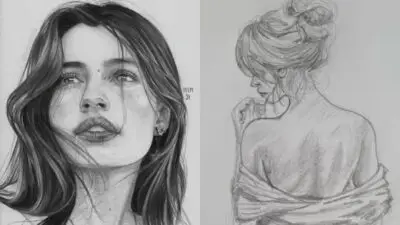Sharks have fascinated people for centuries, inspiring countless artworks and drawings. Creating shark drawings allows artists to capture the unique beauty and power of these creatures while expressing their creativity. Whether someone is a beginner or a seasoned artist, the process can be both enjoyable and rewarding. This blog post will explore various aspects of drawing sharks, from materials and techniques to different styles and inspirations.


As readers dive into this topic, they will learn about the anatomy of sharks in art and discover how to bring their own style into their drawings. The journey of creating these illustrations not only enhances artistic skills but also deepens appreciation for these incredible animals. Each drawing becomes a celebration of the ocean and its majestic inhabitants.
For those curious about sharing their work, this guide will provide tips on promoting and showcasing shark drawings. There is a vibrant community of shark lovers and artists who appreciate this unique art form, making it an exciting pursuit.
Key Takeaways
- Artists can use various materials and techniques to express creativity in shark illustrations.
- Drawing sharks helps improve skills and understanding of marine life.
- Sharing artwork can connect artists with a community of shark enthusiasts.
The Anatomy of Sharks in Art
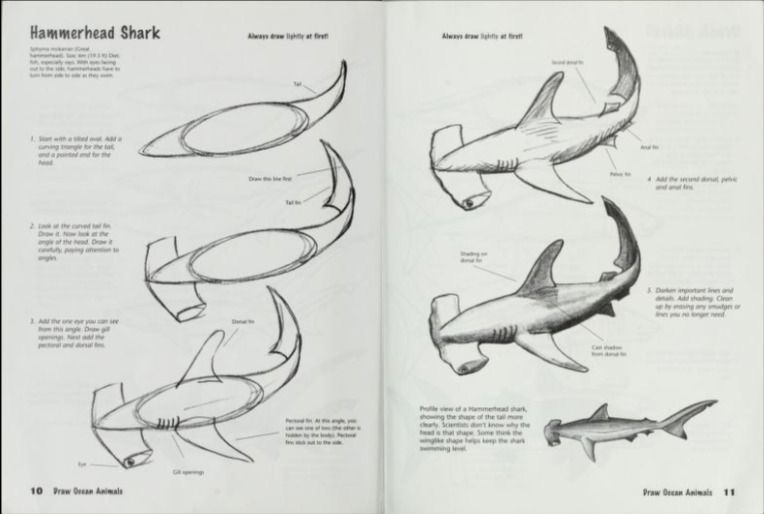
Artists often focus on the unique structures of sharks when creating their works. Understanding how to accurately represent skull shape, fins, and body proportions helps in producing lifelike drawings. Additionally, capturing how sharks move enhances the realism of their sketches.
Understanding Shark Proportions
Proportions are crucial in shark drawings. Each species has distinct sizes and shapes. For example, the whale shark is massive, while the hammerhead has a recognizable head shape.
A drawing tutorial may emphasize:
- Head Shape: Noticeable variations between species.
- Fin Placement: Fins should align correctly on the body.
- Body Length: Keeping the correct ratio is essential.
Artists use reference images to study these features. Sketching often begins with simple shapes to outline the shark’s body. Then, details are added to showcase unique characteristics. This process helps create a more accurate representation in the final artwork.
Capturing Movement in Shark Sketches

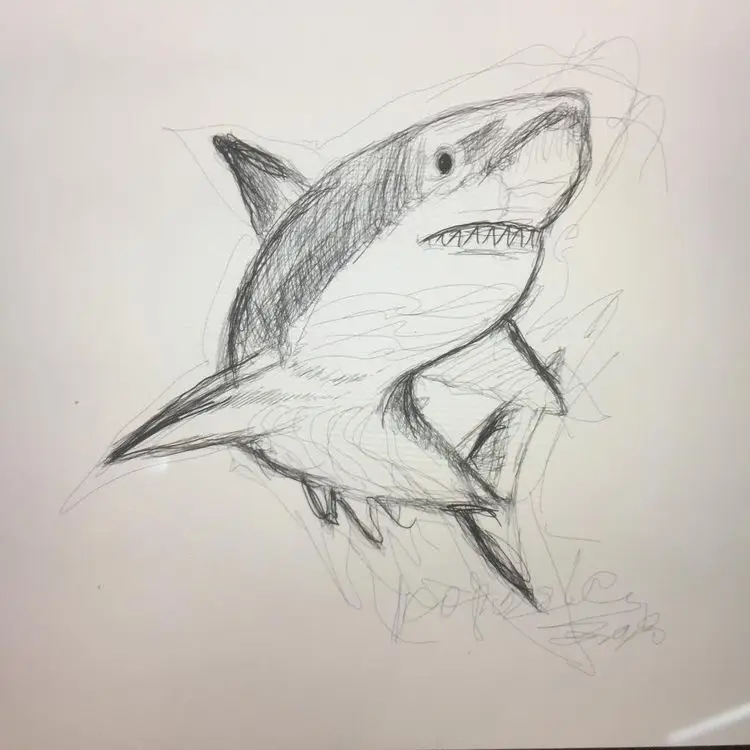
Movement gives life to shark sketches. Sharks glide through water with grace. To capture this, artists often focus on posture and angle in their drawings.
Techniques used in drawing tutorials include:
- Dynamic Poses: Drawing sharks in various swimming positions.
- Line Work: Using flowing lines can suggest movement.
- Shading: Proper shading highlights the body’s contours and gives depth.
To show movement, artists analyze how sharks swim. Sketching multiple frames can illustrate this fluidity. By portraying movement fluidly, the artwork becomes more engaging and realistic.
Materials and Mediums for Shark Drawings

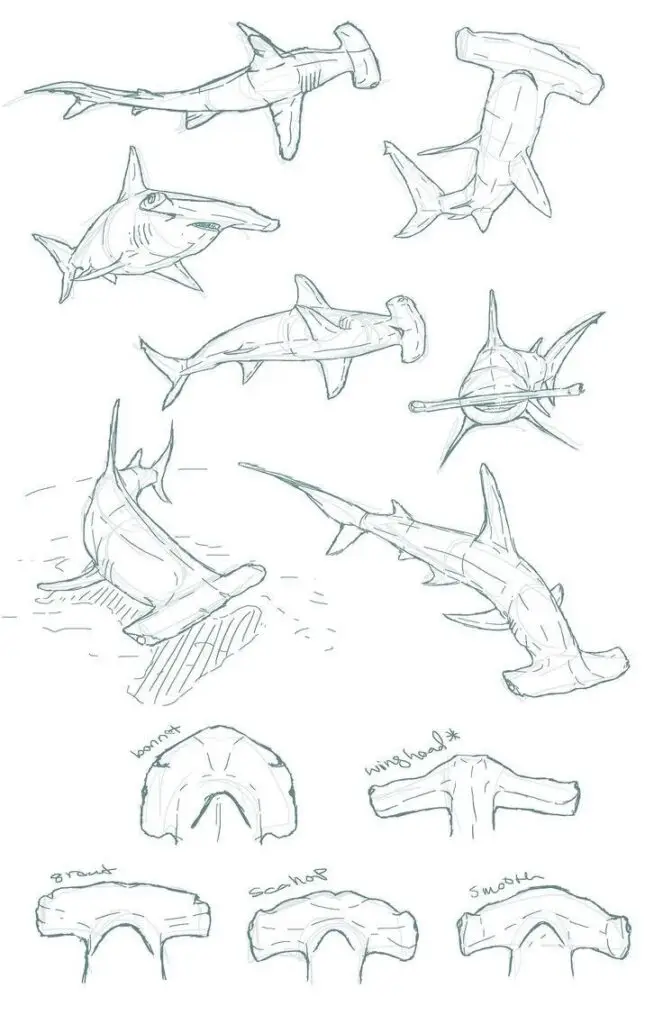
Choosing the right materials and mediums can greatly enhance the quality of shark drawings. Artists can use various options like paper, pencils, paints, and digital tools to express their creativity. Each medium offers different benefits and effects.
Choosing the Right Paper and Pencils
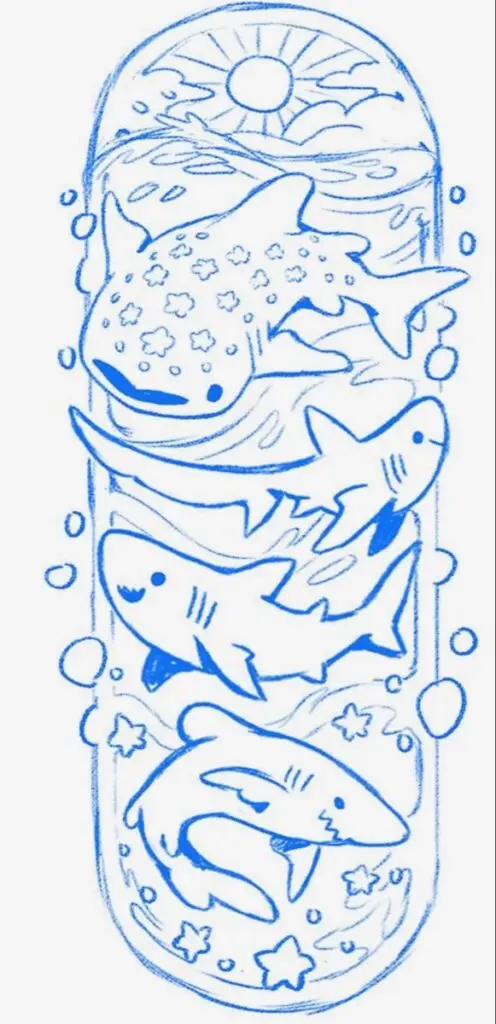
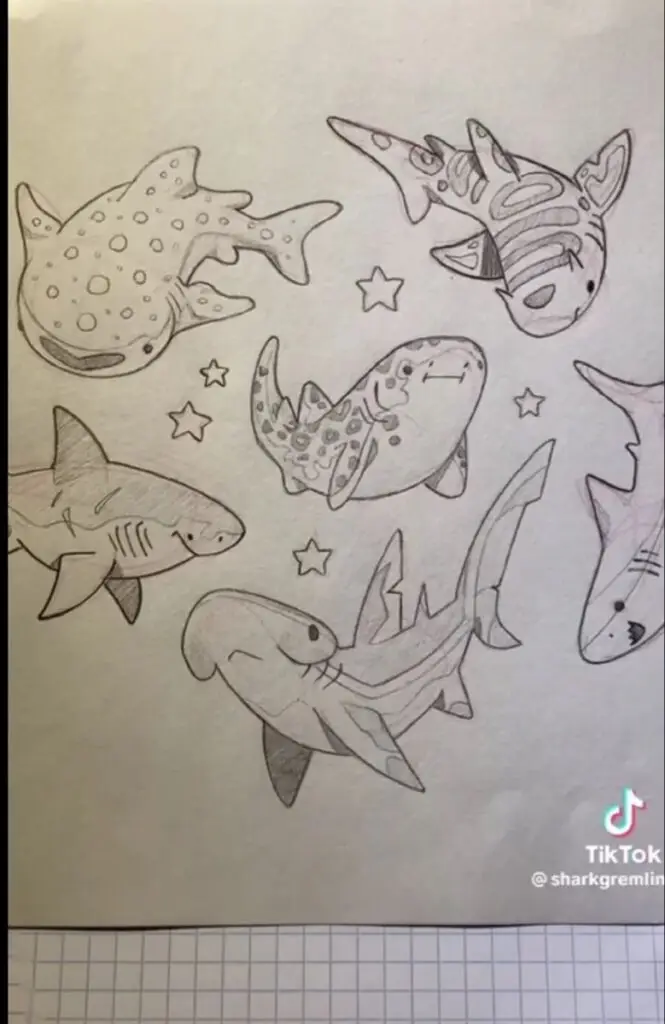
When selecting paper for shark drawings, artists should consider texture, weight, and color. Smooth paper works well for fine details, while rough paper gives a different texture that can be interesting.
Common choices for pencil types include:
- Graphite Pencils: Great for detailed work and shading.
- Colored Pencils: Good for adding vibrant colors to shark illustrations.
- Charcoal: Perfect for bold, dramatic effects.
The choice of paper and pencils can affect the overall look of the shark drawing. High-quality paper can help colors appear more vivid, while the right pencils can aid in creating realistic textures.
Utilizing Watercolor Paints


Watercolor paints offer a beautiful way to color shark drawings. These paints are transparent, which can create soft, blended colors. Artists often use watercolor for an expressive style.
Key points for using watercolor include:
- Paper Type: Use heavy watercolor paper to avoid warping.
- Brushes: Different brush sizes help create both fine details and broad washes of color.
- Layering: Start with light colors and gradually build depth by layering.
Watercolors are easy to mix and can simulate the ocean’s look, enhancing the theme of shark artwork.
Exploring Digital Tools and Software

Digital drawing has become popular for shark illustrations. Artists can create images using software like Adobe Photoshop or Procreate. These tools provide flexibility and numerous features.
Benefits of digital tools include:
- Ease of Editing: Artists can easily correct mistakes or try different colors.
- Variety of Brushes: Digital platforms offer brushes that mimic traditional media, including watercolors and pencils.
- Stock Photos and Vectors: Artists can incorporate these elements to inspire or enhance their work.
Overall, digital art allows for creativity in ways that traditional media cannot. Artists can explore endless possibilities while drawing sharks digitally.
Step-by-Step Shark Drawing Guide

Drawing a shark can be fun and rewarding. This guide breaks down the process into simple steps, making it easier for anyone to follow along.
Starting with Simple Shapes
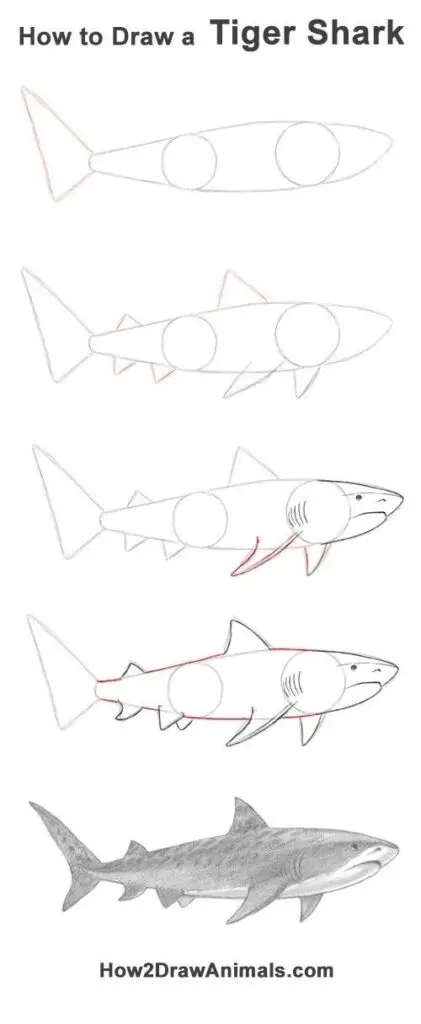
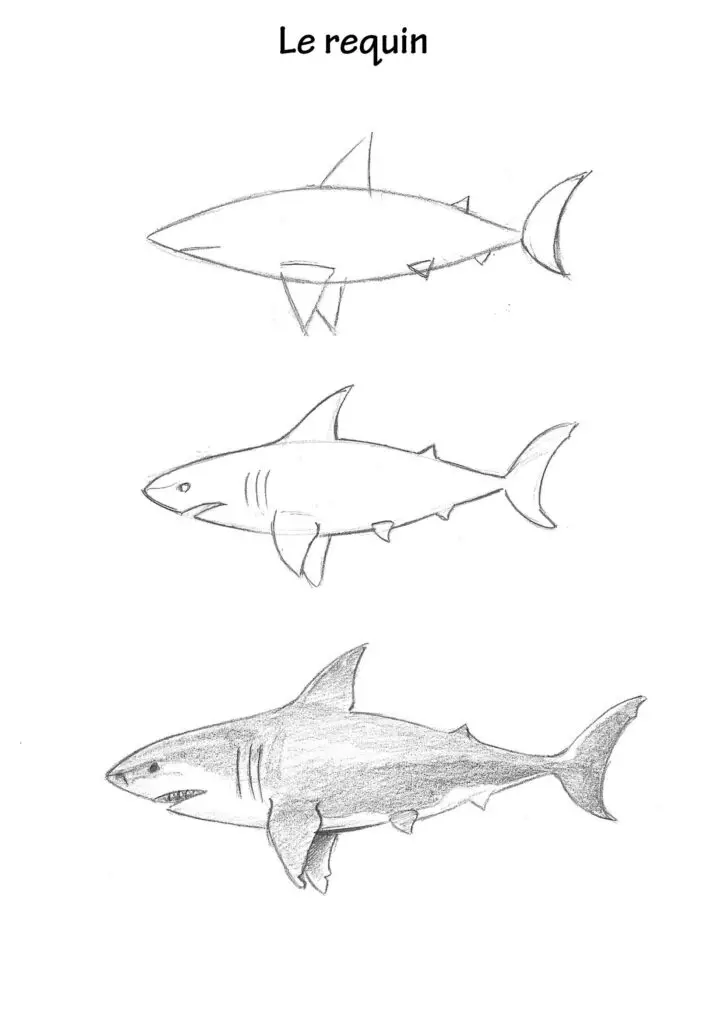
Begin by sketching basic shapes. Start with a large oval for the body and a smaller circle for the head. These shapes act as a foundation for the shark’s form.
Next, draw a triangle for the tail and add two smaller triangles on the top for the dorsal fins. The pectoral fins can be represented by curved shapes on the side.
Adding lines will help define where the head and body meet. This initial outline allows beginners to focus on proportions without getting overwhelmed.
Detailing the Shark’s Features
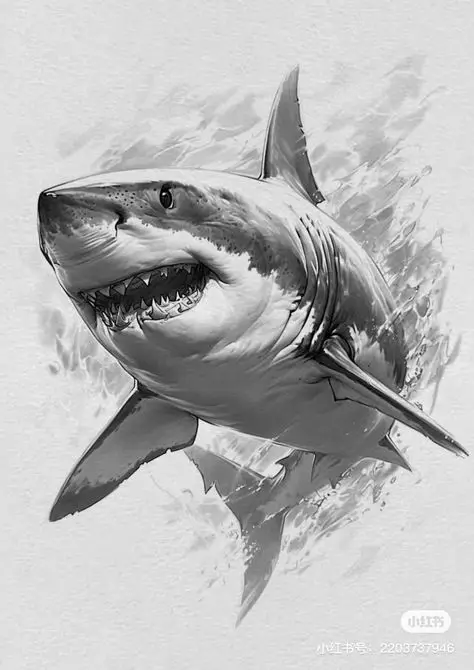
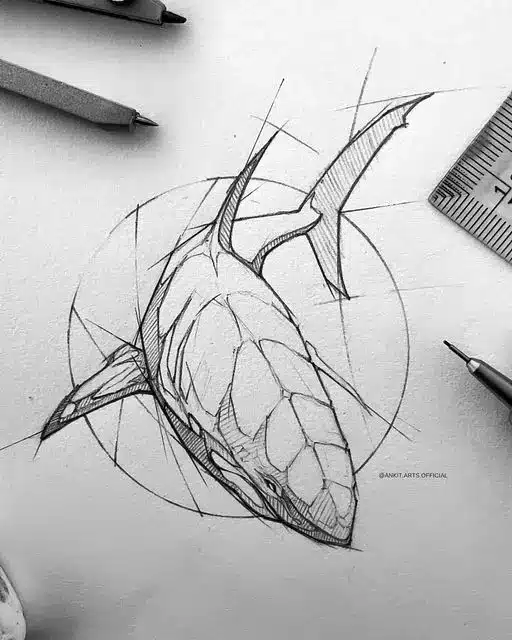
Once the basic shapes are in place, it’s time to add details. Draw the shark’s eyes, which are often above the midpoint of the head. Add a curved line for the mouth, making sure it looks sharp and predatory.
Define the fins more clearly by adding distinct edges and curves. For example, the dorsal fin should look triangular and pointy. Make sure to add gills behind the eyes.
Adding these features makes the shark more recognizable and lifelike. These details may seem small, but they impact the shark’s overall appearance.
Shading and Texture Techniques
To give the shark depth, use shading techniques. Start with light pencil strokes to create shadows under the belly and fins. This technique helps represent light source and adds realism.
Using a blending stump or your finger can smooth out the shading. Create texture by adding small lines to simulate the roughness of the skin.
Use darker shades near the edges of the fins and tail to emphasize their shape. This contrast makes the shark appear more dynamic. A well-shaded shark will have a more three-dimensional look, enhancing the drawing’s overall impact.
Creativity and Style in Shark Illustrations
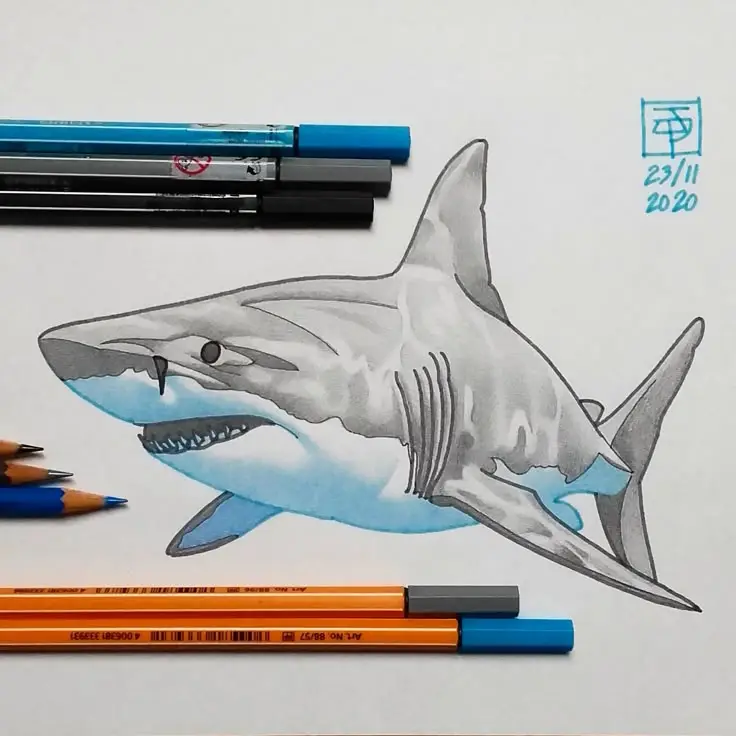
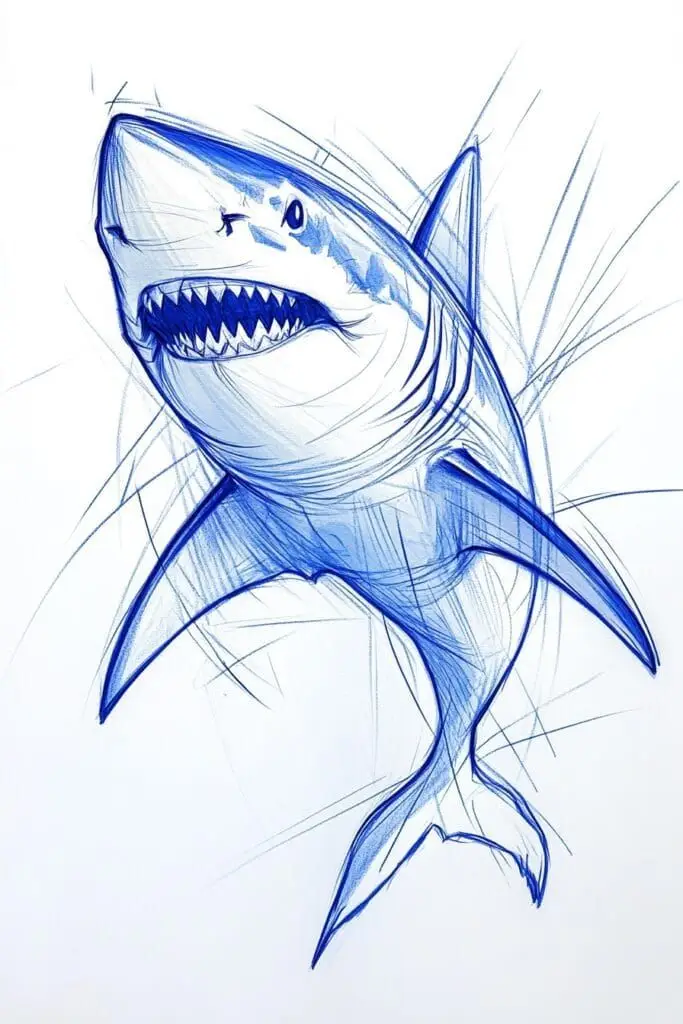
Shark illustrations showcase a wide range of styles and approaches. Artists often blend realism with expression to bring these sea creatures to life. Different techniques create varied impact, from lifelike portrayals to abstract designs that reflect personal creativity.
Incorporating Realism
Realistic shark illustrations focus on accurate details. Artists study photographs and videos of sharks to replicate their features. These works often highlight colors, textures, and shapes found in real sharks.
Using stock photos as references helps create authentic representations. Many artists may also use live videos to capture movements. This attention to detail can make the artwork more engaging and relatable. Realistic shark art is popular in educational contexts, as it promotes awareness about marine life and conservation.
Expressions and Character in Sharks


In this style, artists anthropomorphize sharks to show emotions and personality. For example, a shark might be drawn with a smile or curious eyes. This approach invites viewers to connect with the character of the shark.
The use of bright colors and bold lines enhances these expressions. Artists may choose to depict sharks in humorous situations or friendly poses. This style encourages creativity while breaking stereotypes about sharks being solely fierce predators. Engaging illustrations can spark interest in marine biology for young audiences.
Abstract and Stylized Shark Art
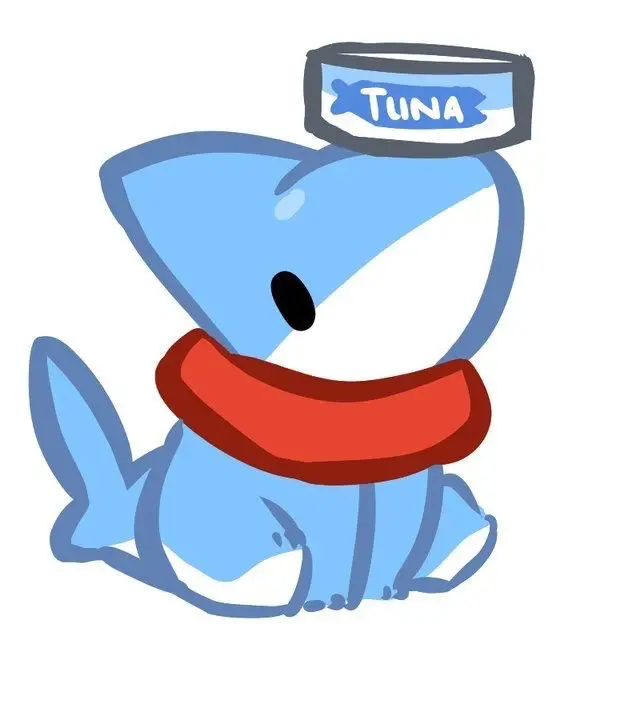
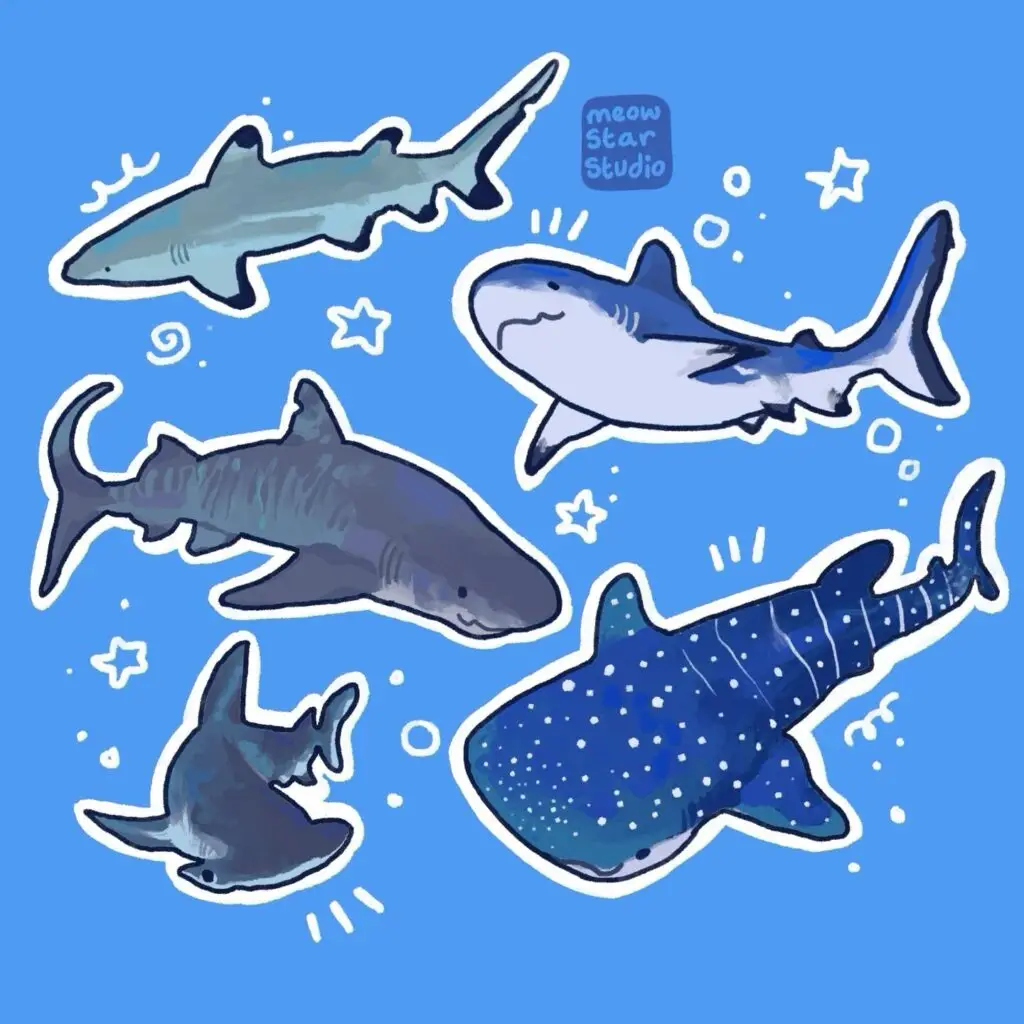
Abstract shark art focuses on shapes and forms rather than realism. Artists express concepts through colors and patterns. These illustrations can evoke emotions or ideas without depicting sharks literally.
For instance, an artist might use swirling colors to represent the ocean’s movement. Stylized designs may include exaggerated features or unique patterns. This approach allows for personal expression and creativity. Such pieces can be visually striking and attract attention in modern art settings. They help broaden the audience’s understanding of sharks as dynamic symbols rather than just creatures of the sea.
Reference and Inspiration for Shark Artwork

Shark artwork can draw inspiration from various sources, including photography and panoramic images. These references help artists capture detail and realism in their designs, making the artwork more engaging.
Using Shark Photography as a Reference
Shark photography offers a direct way for artists to study the anatomy and movement of these creatures. Using high-quality stock photos allows artists to see the intricate details of shark skin and fins. They can focus on colors, textures, and the unique shapes of different shark species.
Artists often use photos taken in natural habitats. These images show sharks swimming gracefully, which can inspire dynamic poses in artwork. Artists may also pay attention to how light interacts with the water and the sharks. This helps them create a sense of realism in their pieces.
Leveraging 360° Panoramic Images
360° panoramic images provide a broader view of sharks in their environments. This type of imagery allows artists to visualize how sharks interact with other marine life. It can show a complete underwater scene rather than a single angle.
Artists can capture more context in their artwork, allowing for interesting compositions. For example, they can depict sharks alongside coral reefs or schools of fish. The immersive view encourages creativity and can lead to more informed designs. Accessing these panoramic images enables artists to convey a richer narrative in their shark artwork.
Promoting and Sharing Your Shark Drawings
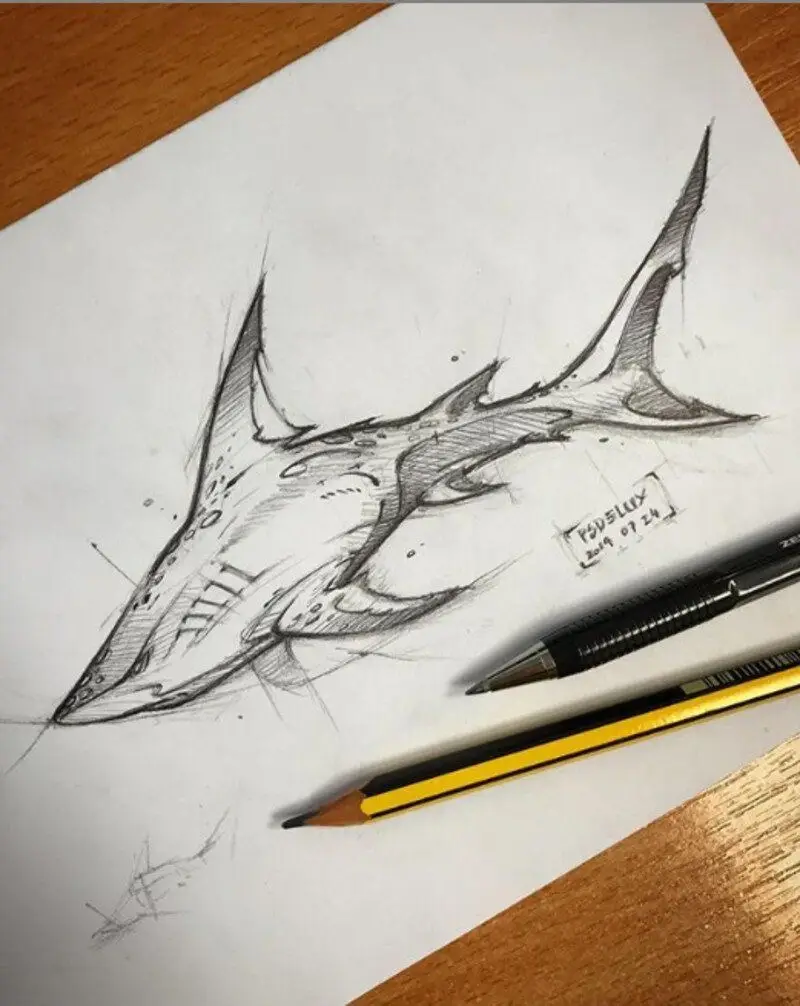
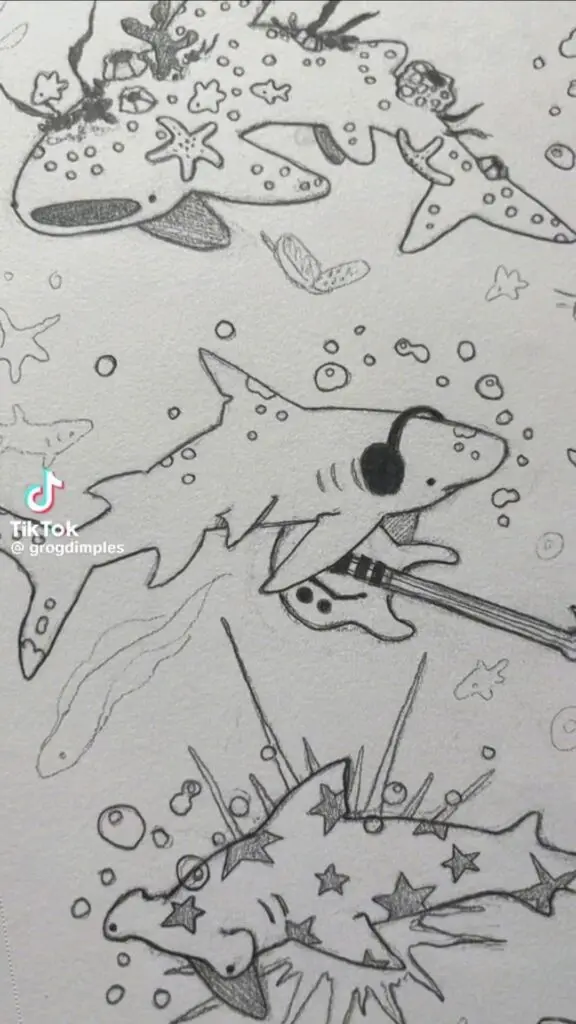
Sharing shark drawings can help artists connect with others who appreciate marine art. Using online platforms can enhance visibility. Selling reproductions or vector art can also generate income. Here’s how to effectively promote and share these creative works.
Online Platforms for Displaying Shark Art
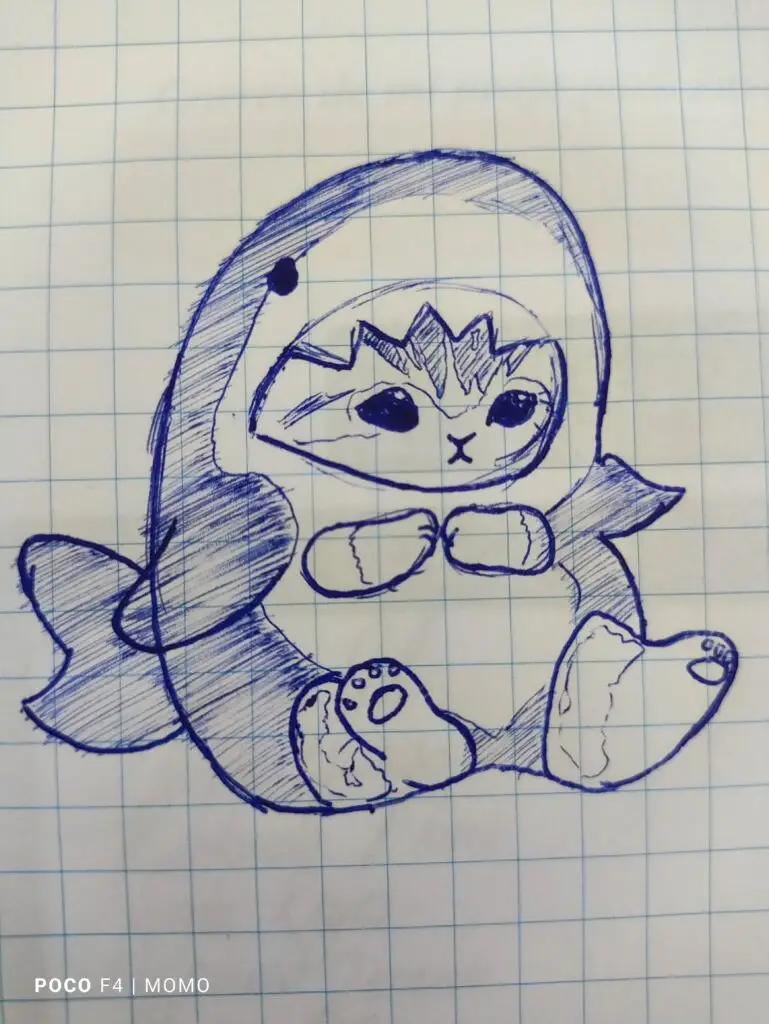

Several online platforms can showcase shark drawings. Websites like Instagram, Pinterest, and DeviantArt are great for visual art. They offer communities where artists can share their work and receive feedback.
- Instagram: Use hashtags like #SharkArt or #MarineLifeArt to reach interested audiences. Engaging with followers can build a loyal fanbase.
- Pinterest: Pin shark-themed boards to attract viewers. Ensure images link back to personal portfolios or shops.
- DeviantArt: This platform allows uploading art and getting critiques. Joining groups focused on marine life can increase visibility.
With these platforms, artists should regularly update their profiles and engage with their audience to grow their presence.
Selling Reproductions and Vector Art
Artists can turn shark drawings into products, such as prints or vector designs for digital use. They can sell these in various ways.
- Prints and Merchandise: Services like Redbubble or Etsy allow artists to sell prints, t-shirts, and more. Artists can set their prices and choose product types.
- Vector Art: By creating vector files of their shark drawings, artists can sell them on sites like Shutterstock or Adobe Stock. This format is useful for designers and businesses.
Marketing is essential here. Sharing links on social media or creating a personal website can draw more customers. Clear, appealing visuals are key to catching the eye of potential buyers.
- 4.0Kshares
- Facebook0
- Pinterest4.0K
- Twitter3
- Reddit0


